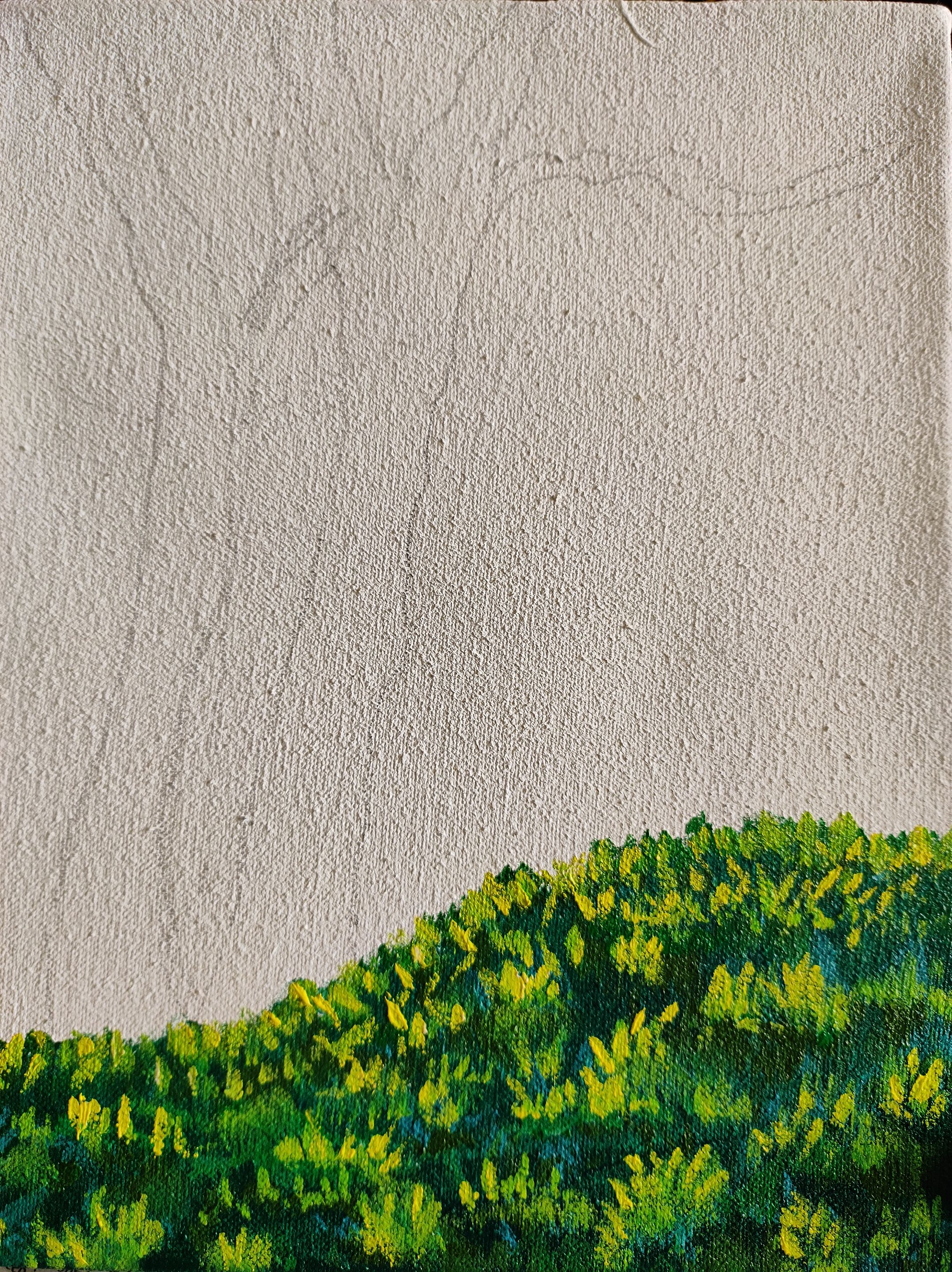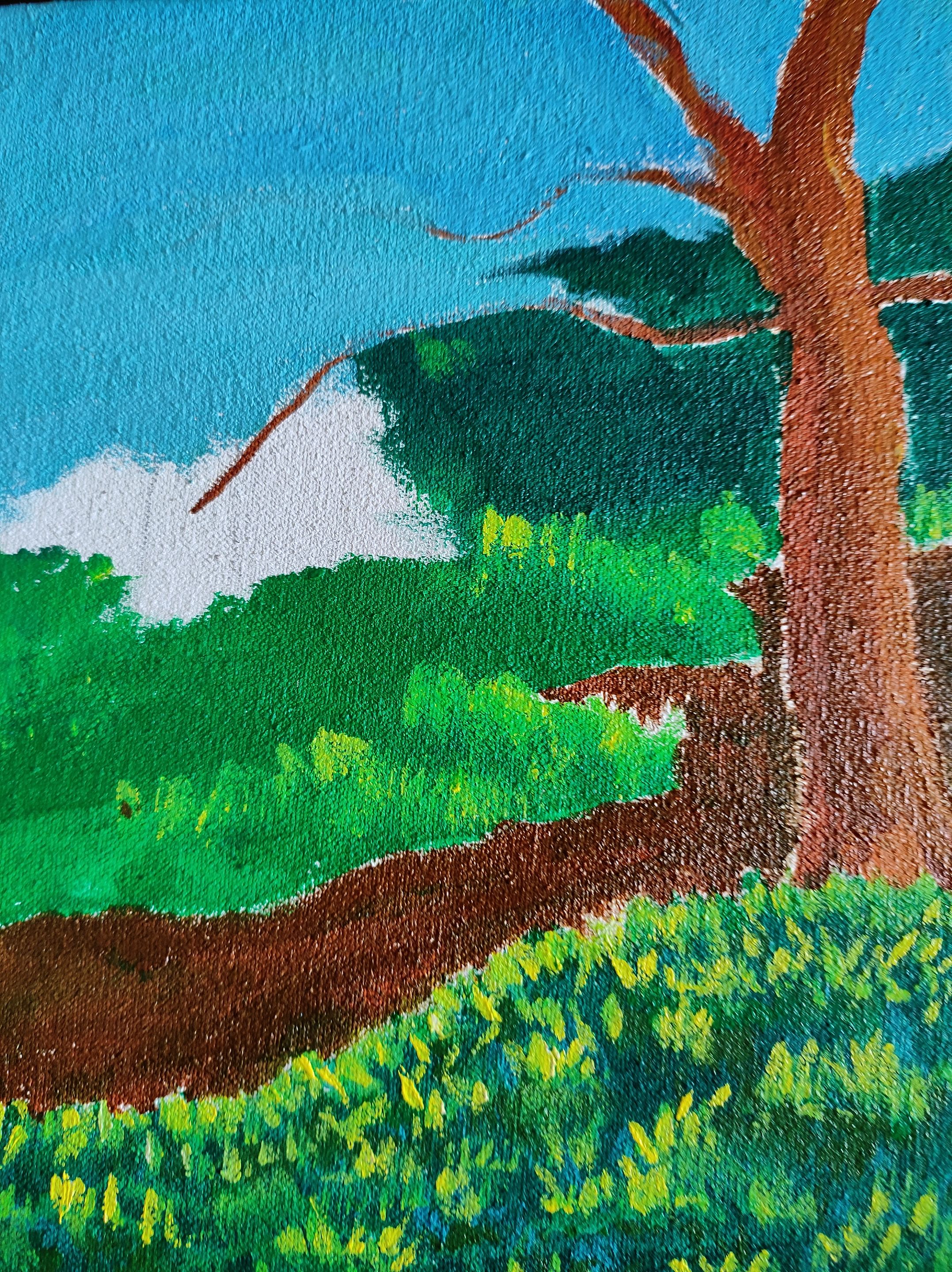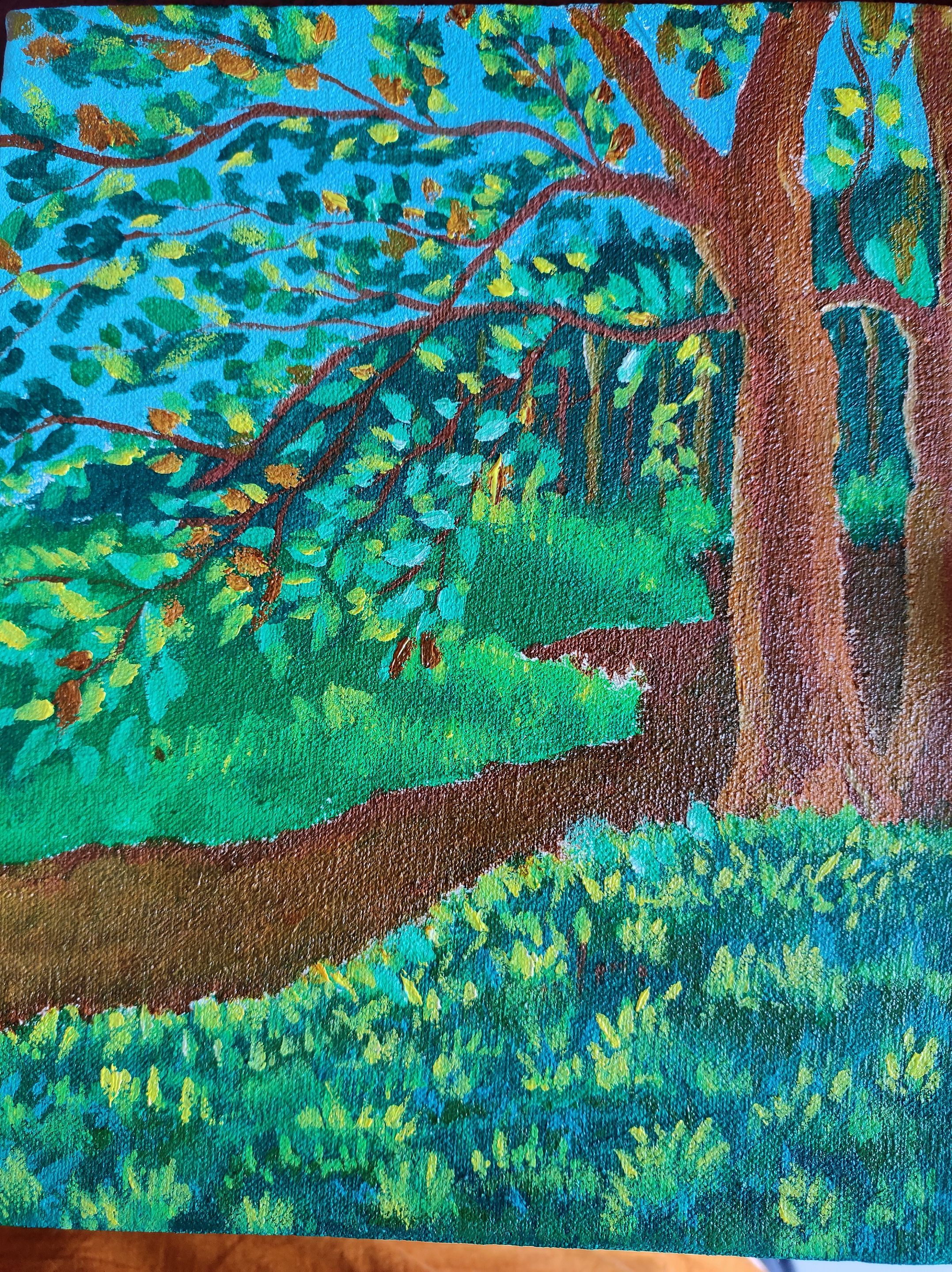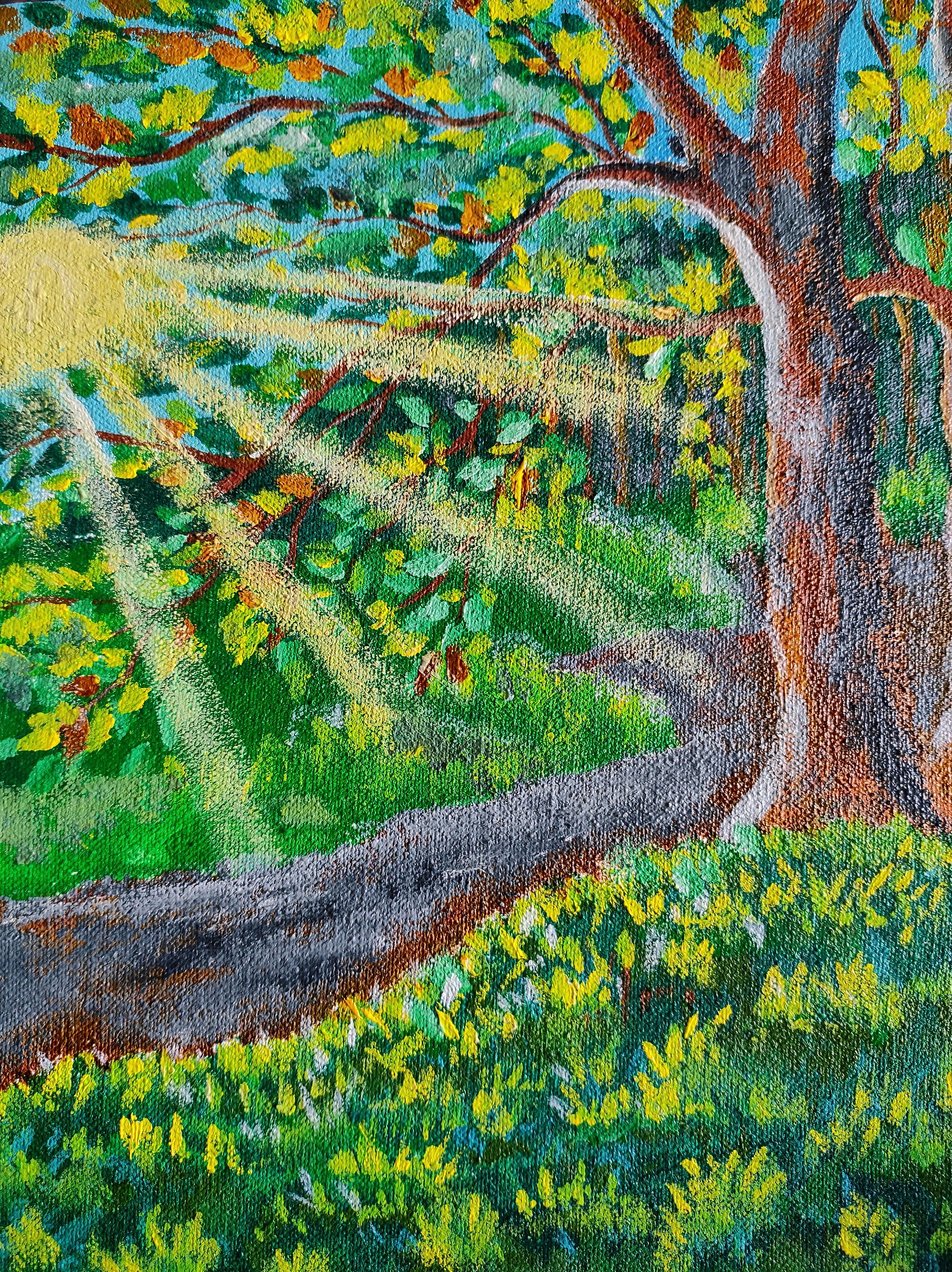Well this time, I’m not painting for myself. It’s a commission work. I think I’ve started doing commission work after ages! I got some orders that have been pending for months. Mostly, the reason is procrastination. I was trying to avoid commission work. Actually the truth is, it hurts every time I sell my art. When you paint something with your heart and soul, putting all your emotions, it will get attached to you. It’s too tough to avoid the urge to keep the paint in your house. I have the same feelings while painting this one.
My customer is also a nature lover like me. And that comes like a blessing to me. Because painting nature is my comfort zone. There's something deeply satisfying about painting a canvas with natural scenery. Blending different shades of green is the favorite thing that I like! I think it comes naturally to me.
For my painting, I chose a tranquil forest scene, inspired by our recent trip. I wanted to focus on the sun rays, peeking through the tree leaves. I don’t have any idea how to draw the sun rays. So it was kind of a challenge for me! I always try to push my ultimate level in painting, exploring different parts that are hard to draw. And when you’re out of your comfort zone, and take the challenges, you can surprise yourself! You also get to see a new version of yourself. And this will easily boost your confidence level!
The first step in my painting process is to visualize the scene. By closing my eyes, I tried to imagine and feel the place. I imagined touching the ground with bare feet, feeling the warmth of the grass, breathing the moist air, touching the bark of the tree, and observing the different shades of green. This process not only helps you to paint but also takes you through a therapeutic journey.
Before painting my canvas, I have to make it ready. Usually, I brush White Acrylic Emulsion paint and dry it out. This process can help to reduce the color-absorbing tendency of the canvas. When the white-coated canvas is ready, I start my painting.
For this project, I used fevicryl acrylic color, acrylic medium, and camel acrylic medium gloss. Brushes, palette and easel are common things for all projects.

Before diving into painting, I lightly sketched the outline of my scene with a pencil. This included the horizon line, the outline of the trees and the basic shape of the lake. This step helped me map out where each element would go and ensured that my composition was balanced.

I started painting the ground and grass, blending different shades of green. Then the background and lake. The key here was to work quickly, blending the colors while they were still wet to achieve a smooth transition.

Next, I painted the lake and sky, using a mix of blues and greens. I couldn’t properly add the reflections of the trees and sky, as the area is so small. Also I’m a noob artist. I make the background of the lake brown then add the details.

My main object is the front tree. So I start to put different shades and color grading here. I put darker colors first and gradually add lighter tones to create depth. For the leaves, I used a dabbing technique with a small, stiff brush, which gave a more natural, textured look. The trunks were painted with a fine-tipped brush, adding details like bark and knots.

To finish, I work the details with the leaves, put vivid shades. Then comes the toughest part, sun rays! First I scale some white lines that come from the source. Then brush with form which gives a little smooth shades of white. Then I put a yellowish vibe to make it more real. I add some white shades to the tree bark too. And these shadings make the art piece more realistic!

Well this art isn’t my best one. Because I was expecting much better than this. But hey! You can’t bring out the perfect one without hardship! I have to work on some more to reach for the perfect one!

If you’re thinking about painting natural scenery, my advice is simple: start with a place that inspires you, take your time to plan your project, and don’t be afraid to make it your own. Nature is wonderfully imperfect, and so too should be your art.
Happy painting!
